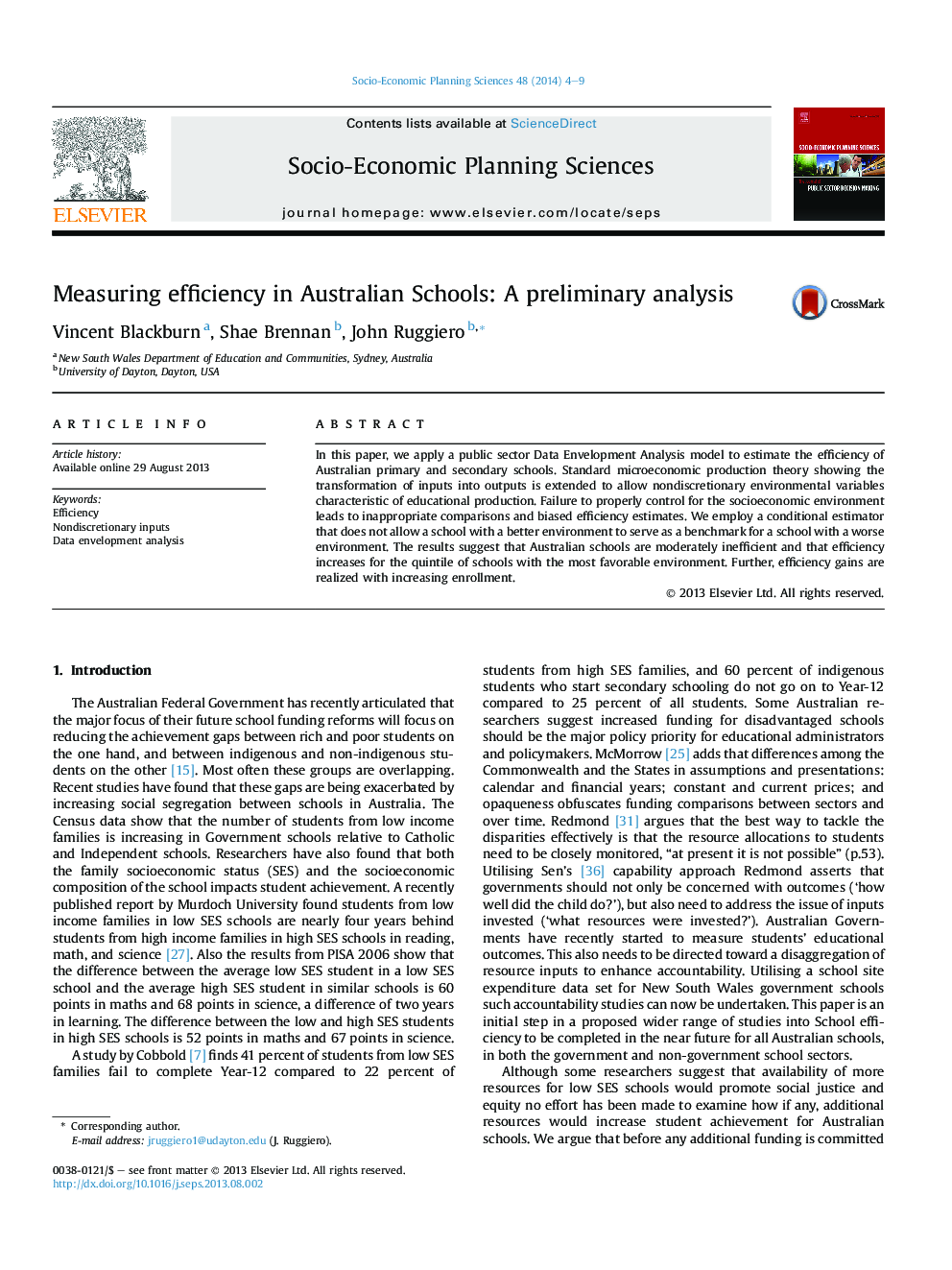| Article ID | Journal | Published Year | Pages | File Type |
|---|---|---|---|---|
| 987097 | Socio-Economic Planning Sciences | 2014 | 6 Pages |
•We analyze educational production using a public sector DEA model.•We apply a conditional estimator to control for the socioeconomic environment.•We apply the models to analyze Australian primary and secondary schools.•On average, primary (secondary) schools are observed spending about 23 (20) percent above minimum cost.•We identify potential savings of approximately $1903 ($2201) per pupil for primary (secondary) schools.
In this paper, we apply a public sector Data Envelopment Analysis model to estimate the efficiency of Australian primary and secondary schools. Standard microeconomic production theory showing the transformation of inputs into outputs is extended to allow nondiscretionary environmental variables characteristic of educational production. Failure to properly control for the socioeconomic environment leads to inappropriate comparisons and biased efficiency estimates. We employ a conditional estimator that does not allow a school with a better environment to serve as a benchmark for a school with a worse environment. The results suggest that Australian schools are moderately inefficient and that efficiency increases for the quintile of schools with the most favorable environment. Further, efficiency gains are realized with increasing enrollment.
